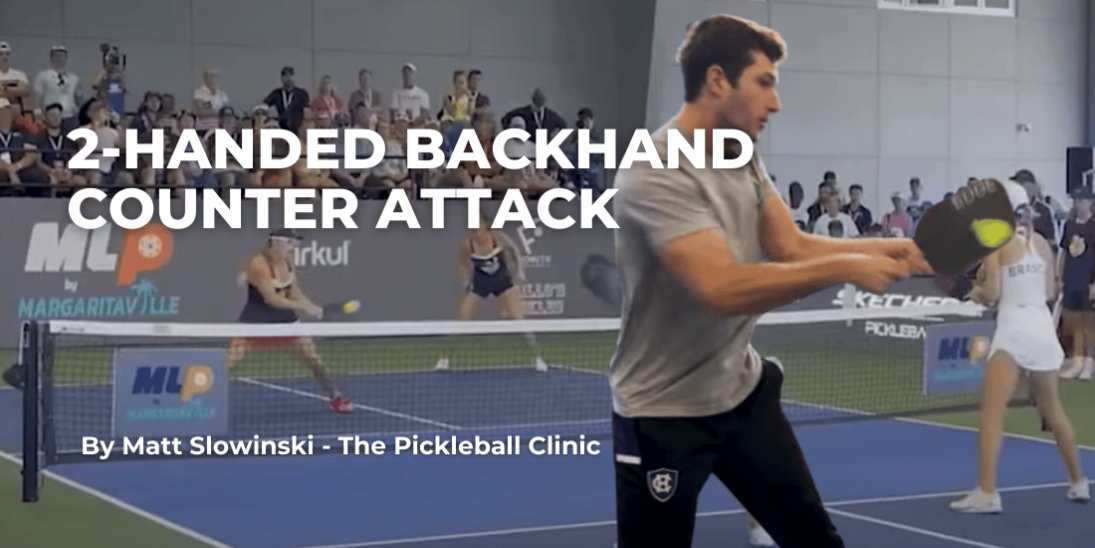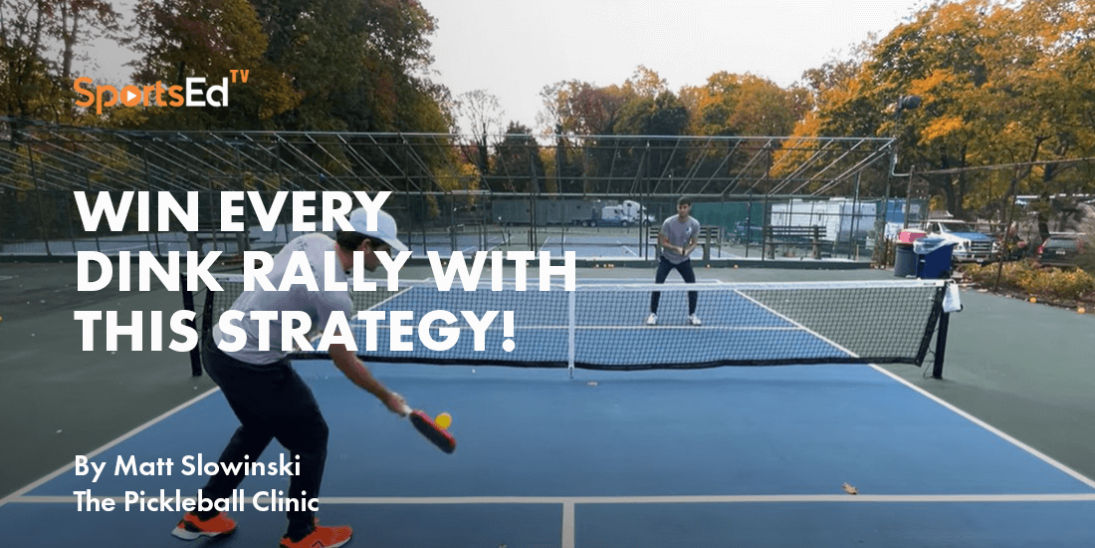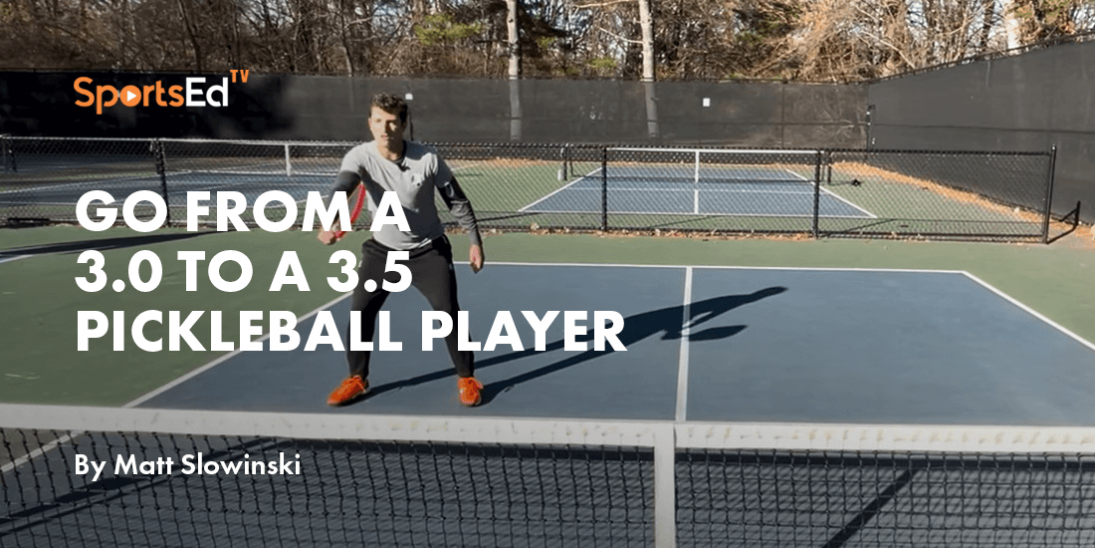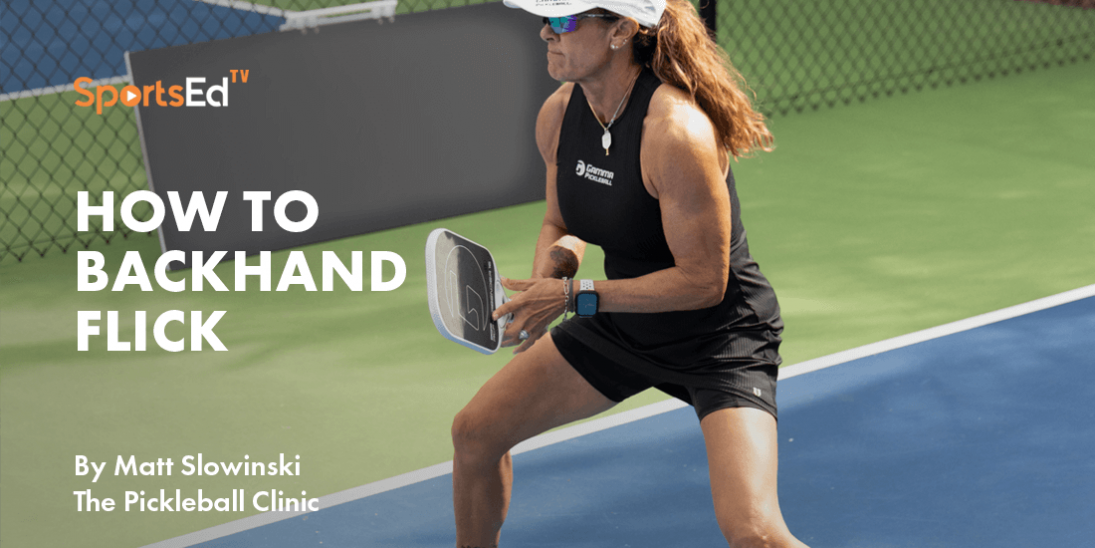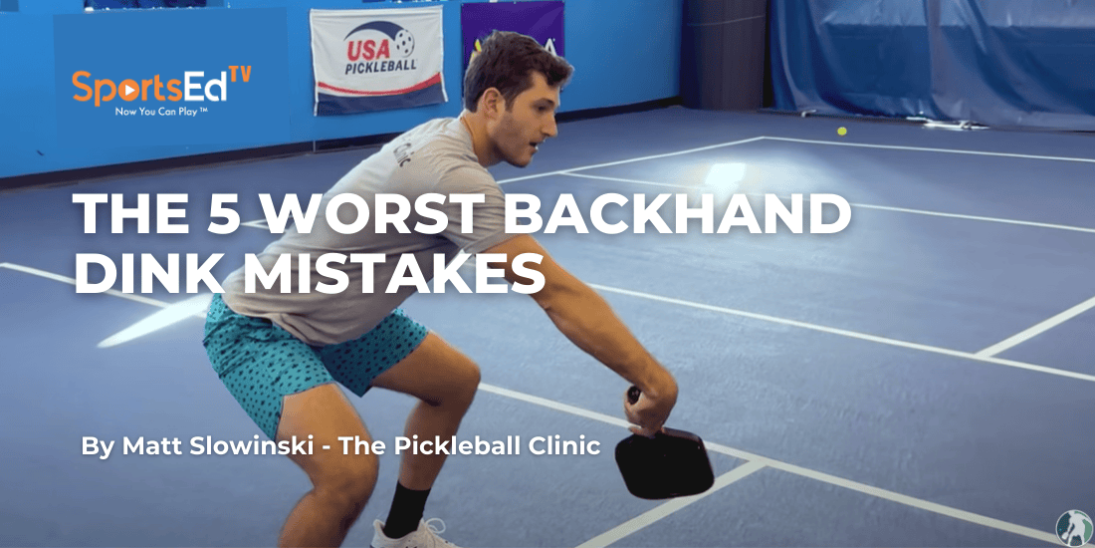Welcome and thanks for visiting...

The Return of Serve in Pickleball: Tips and Techniques
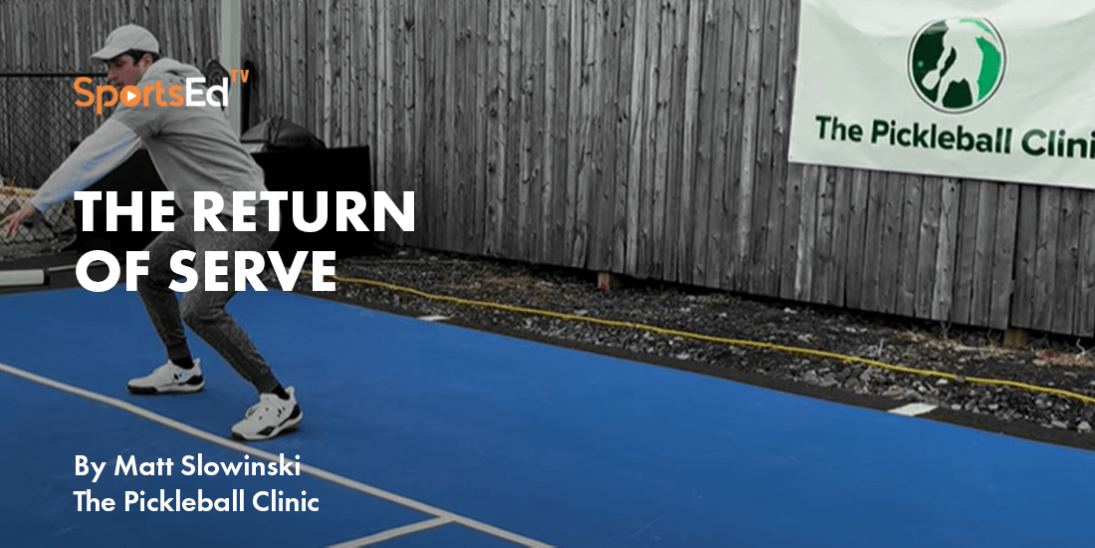
To see this video, you must be a member. Membership options:
Free - newsletter, video & blog access,
earn

Yearly - full access & member features
earn 5x

US$179 - may be lower outside US
Lifetime - same as yearly, but forever
earn 10x

US$350 - may be lower outside US
earn

Yearly - full access & member features
earn 5x

US$179 - may be lower outside US
Lifetime - same as yearly, but forever
earn 10x

US$350 - may be lower outside US
MySportsEdTV is a community where people share their passion for sports. It’s a place where athletes, coaches and parents can share information and share experiences. It’s a place to make new friends across the globe. Members have access to great features unavailable to non-members. Members receive helpful information via our FREE email newsletters. We always respect your privacy and your data will not be sold or shared
To use this function, you must be a full member. Membership options:
Free - newsletter, all video & blog access
Yearly - full access & member features
US$179 - may be lower outside US
Lifetime - same as yearly, but forever
US$350 - may be lower outside US
You may also use a promo code for payment
Yearly - full access & member features
US$179 - may be lower outside US
Lifetime - same as yearly, but forever
US$350 - may be lower outside US
You may also use a promo code for payment
MYSportsEdTV is a community where athletes, coaches and parents connect and share their sport passion. We don’t sell our member data or send spam. Members will receive our FREE email newsletter to alert you about new video and blog content for the sports you follow.
To use this function, you must be a paid member. Membership options:
Free - newsletter, all video & blog access
Yearly - full access & member features
US$179 - may be lower outside US
Lifetime - same as yearly, but forever
US$350 - may be lower outside US
You may also use a promo code for payment
Yearly - full access & member features
US$179 - may be lower outside US
Lifetime - same as yearly, but forever
US$350 - may be lower outside US
You may also use a promo code for payment
MYSportsEdTV is a community where athletes, coaches and parents connect and share their sport passion. We don’t sell our member data or send spam. Members will receive our FREE email newsletter to alert you about new video and blog content for the sports you follow.
The return of serve is one of the most crucial shots in pickleball. If you can't get your return in the court, you can't get a side out, which means you can't score, and without scoring, you can't win. With today's new paddle technology, serves are becoming harder to return than ever before, especially since the chainsaw serve was banned. This makes it essential to ensure that our returns are in top shape. Using good form, strategy, and technique can help us get our returns deep in the box, preventing our opponents from hitting powerful drives and giving us the chance to get a side out.
Key Tips for a Successful Return
1. Stop Before You Hit
One common mistake players make is running through the return while standing straight up. This can lead to missed shots or very short returns. To counter this, you need to:
- Stop Before Hitting: Don't hit the return while running. Instead, pause briefly to set your feet before continuing to the kitchen line. This brief stop will stabilize your body, allowing you to control your shot better.
- Stability for Control: When you stop and set your feet, your body gains stability. This stability is crucial for controlling your shot, as it prevents your paddle and feet from moving erratically. A stable body ensures a stable shot.
2. Get a Low Base
When dealing with heavy topspin serves that push you back, it’s crucial to have a stable, low base:
- Knee Bend: Ensure your knees are bent and your back is upright. This low base helps counteract the force of the ball, enabling you to swing with power and control.
- Push Off Your Back Leg: Drive into the ball by pushing off your back leg, providing a stable base and allowing you to control the shot all the way to the back court.
- Force Counteraction: A low base allows you to be a stronger force against the incoming ball. This helps you maintain control and stability, especially against powerful serves.
Additional Tips for Perfecting Your Return
3. Give Yourself a Runway
Positioning is key to a good return:
- Start Further Back: Stand about seven feet behind the baseline. This ensures that no matter where the serve lands, you are moving forward to hit it. This forward momentum helps you control the ball better.
- Avoid Moving Backwards: Moving backwards makes you off-balance and reduces control. Starting further back allows you to always move forward, maintaining balance and control.
- Forward Momentum: Moving forward into your return gives you the momentum needed to control the shot and continue to the kitchen line effectively.
Practical Application
To put these tips into practice, remember:
- Stop Before You Hit: Move up to the ball, stop, hit, and then continue to the kitchen line. This sequence ensures that you are balanced and stable when hitting the return.
- Get Low: Bend your knees and push off your back leg to drive through the ball. A low base provides the necessary stability to counteract the force of a powerful serve.
- Start Back: Give yourself extra room behind the baseline to move forward into your return. This positioning helps you avoid being pushed back and off-balance.
Common Mistakes to Avoid
Running Through the Return
- Consequence: Running while hitting the return can cause you to miss the shot or hit it very short, giving your opponent an advantage.
- Solution: Stop for a split second to set your feet before hitting the ball. This ensures stability and control.
Standing Straight Up
- Consequence: Standing straight up makes it difficult to handle heavy topspin serves, leading to off-balance shots.
- Solution: Get a low base with bent knees and an upright back. This stance helps you counteract the force of the serve and maintain control.
Starting Too Close to the Baseline
- Consequence: Starting too close to the baseline can push you back, making it hard to control the return.
- Solution: Start further back to give yourself room to move forward. Forward momentum aids in control and stability.
Final Thoughts
Mastering the return of serve in pickleball requires a combination of good technique, strategic positioning, and physical stability. By stopping before you hit, getting a low base, and giving yourself a runway, you can significantly improve your return game. These tips not only help you get the ball back into the court but also allow you to do so with power and control, setting you up for successful rallies and points.
Incorporate these strategies into your practice sessions to see improvement in your return of serve. Consistency and stability are key to gaining control over your returns, helping you score points and ultimately win games. Whether you're facing powerful serves or simply aiming to enhance your game, these tips will provide a solid foundation for mastering the return of serve in pickleball.



